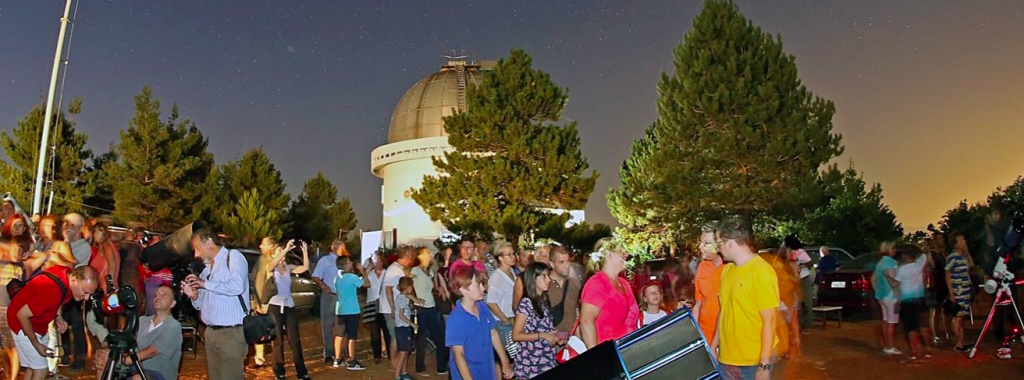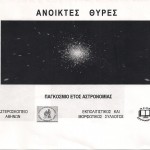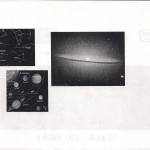
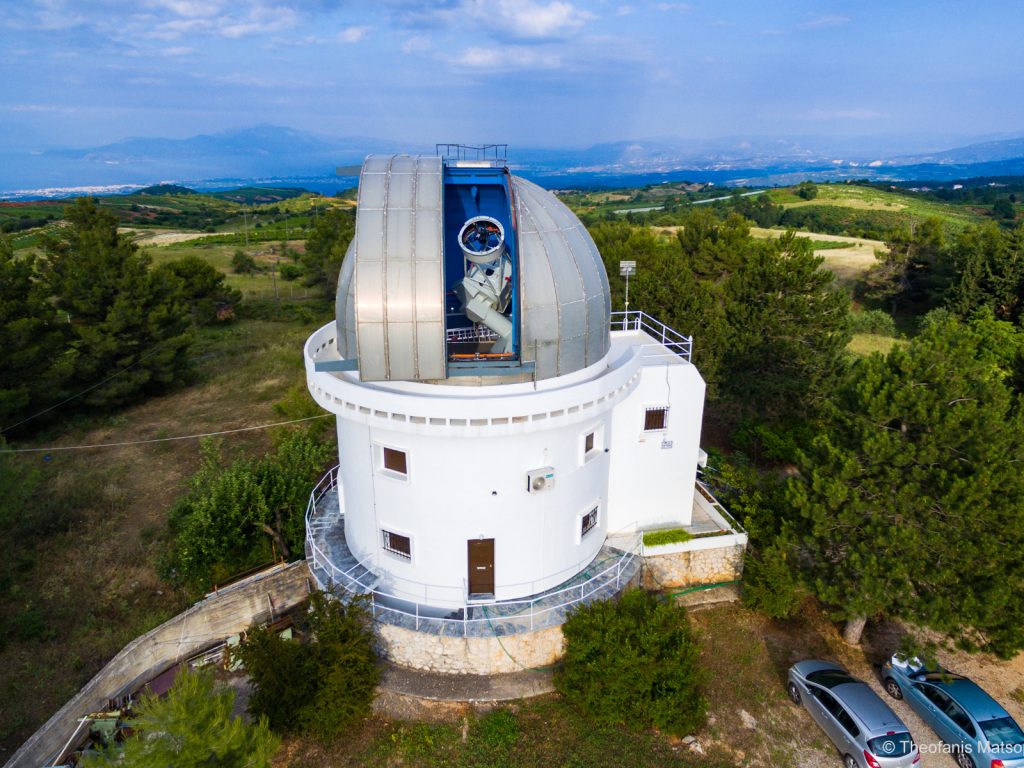
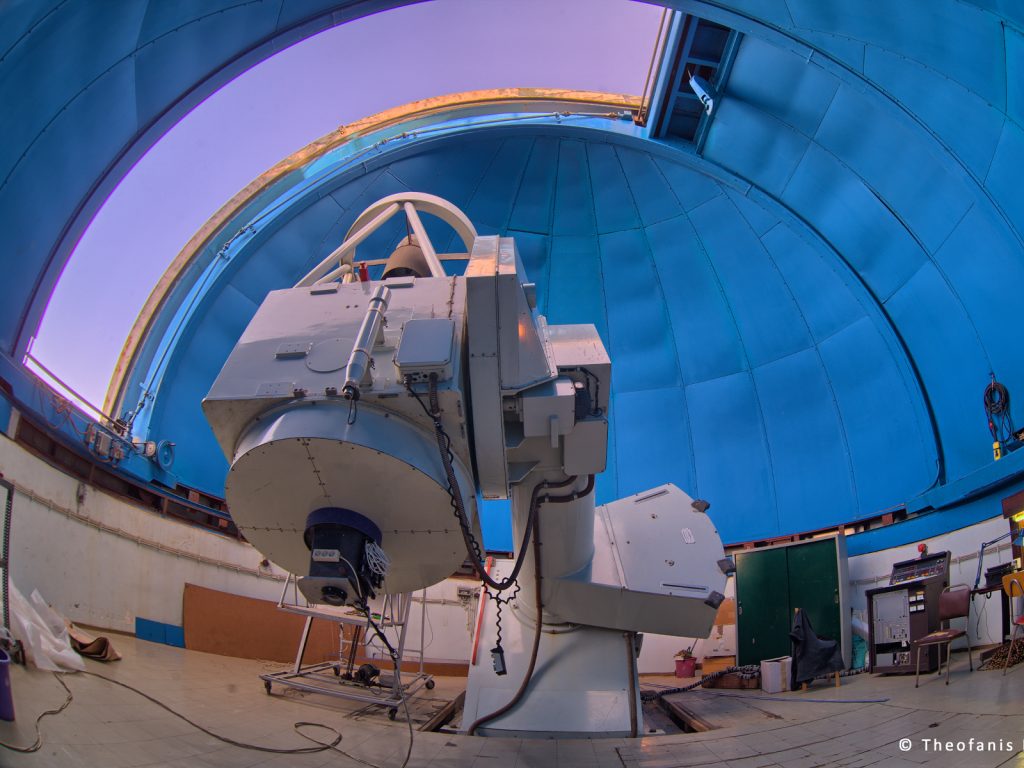
General information
The Kryoneri Astronomical Station was founded in 1972 in Corinthia, in the north of the Peloponnese, just 22 km southwest of the nearest town, Kiato. It is located at an altitude of 1000 meters, at the foot of Mount Kyllini, on a plot of 65 acres that was later extended to 105 acres. Its operation started in 1973 with a 15 cm diameter microscope and another smaller one for observing the polar star. Since 1975 the station has had a reflecting Cassegrain telescope with a diameter of 1.23 meters, which was built in Newcastle, England, and is now one of the largest telescopes in Greece and the Balkans. It also has a guest room of 80 square meters for the accommodation of Greek and foreign astronomers who make observations and studies especially during the summer months.
The telescope was upgraded in 2016, in the framework of the ESA program NELIOTA, with the mission to monitor the lunar surface for impacts of near-earth objects. In December 2017, the observatory obtained an IAU Minor Planet Center code (“L10”) . The telescope is currently equipped with the following instruments:
- 2 x photoelectric photometers for photometric photometry of stars and nebulae;
- 1 x photographic device to photograph stars;
- 1 x photographic device for photo planets;
- 1 x photoelectric spectrophotometer;
A window to the stars!
The Observatory serves as a bridge between the public and astronomy, offering anyone interested a window to the stars. Every year, in July or August, the Observatory hosts an “Open Doors” event, inviting the public to star-gaze and receive new and interesting information about the work conducted at the Observatory. The event attracts many visitors every year and includes: an astronomical night (observing celestial objects through telescopes, visiting the interior of the astronomical station, viewing and reading materials concerning astronomy etc.).
Since 1995, more than 7000 guests have visited the Observatory, either during the “open doors” or via private tours. Students in astronomy, astrophysics, or similar subjects, can apply for professional trainings in photometry of double and variable stars, stellar systems and distant objects of the solar system, etc. In total, students from at least twenty Greek schools visit the Observatory each year.
Weather statistics
The Kryoneri Astronomical unit has a Davis Vantage Pro2 Weather Station incorporated, who issues monthly weather statistics. The weather station is located at almost 850 m above sea level, in the proximity of the Observatory telescope, on a pole 5 m above the ground. The night duration is calculated from 1hr past sunset to 1hr before sunrise. The weather conditions acceptable for observations, are defined assuming a humidity less than 80% and wind speed less than 15 m.
The Civic support initiative for the Astronomical Station (PRO.AS.K)
The Cultural Association of Kryoneri got actively involved in 1998 for the promotion of the Observatory, with their practical support in the co-organization of the “Open Doors” with the National Observatory of Athens and the organization of many large concerts in this context, with the aim of creating a Planetarium.
The Civic Support Initiative for the Astronomical Station Krioneriou (PRO.AS.K.) was founded in July 2003. Its aim is to support and promote the station and its projects, to mediate between the involved institutions, authorities and educational institutions both in Greece and abroad in order to promote the work of the Astronomical Station of Kryoneri, as well as to inform the public about the importance of the existence and operation of the station. After its establishment, PROASK (Initiative for the Kryoneri Observatory) has mediated a series of meetings between the Peloponnese Region, the Prefecture of Corinthia and the National Observatory of Athens, in order to achieve the following projects::
- To install a weather station;
- To install a seismograph station;
- To repair and conduct maintenance works on the telescope and the building that hosts it;
- To construct a big conference room with digital projection and a large screen (to be used as Planetarium);
The PRO.A.S.K. tried to actively promote these projects and to push for their inclusion in the “Third Community Support Framework (CSF) / ROP Peloponnese”, a development strategy negotiated between the European Commission and the Greek authorities, with a budget of 26 billion euros from the Structural and Cohesion Funds. However, in spite of their efforts, the afore-mentioned projects failed to enter the CSF list.
The PRO.A.S.K. believes that the support of the Astronomical Station in Kryoneri should be considered a priority for the local authorities, as it plays an essential role in nurturing the scientific and educational life in the whole region. The public authorities should invest, with a matter of urgency, in fostering the scientific infrastructure and refurbishing the Station building. They should also push for the inclusion of the Planetarium in the Third CSF strategy, which will bring huge benefits to the whole region.
